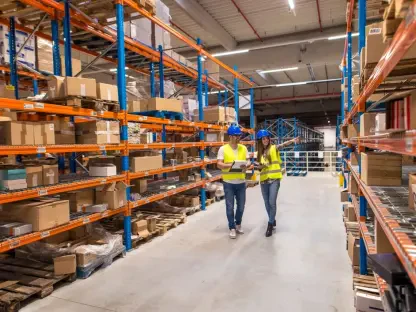In the fast-paced and ever-evolving world of logistics, few are as knowledgeable as Rohit Laila. With decades of experience in supply chain logistics, Rohit brings a wealth of insights to the table, especially on labor relations and the transformative role of technology. Today, he offers his perspective on the current labor negotiations between DHL Express Canada and the union, Unifor.
Can you provide a brief overview of the current situation with DHL Express Canada’s labor negotiations with Unifor?
The negotiations have been noteworthy, given their duration and the substantial number of employees involved, over 2,000. These talks have been happening since last year, following the expiration of their previous agreement. As we approach Sunday’s deadline, there remains the legal possibility of a strike or lockout, with the union showing strong favor towards strike action.
What are the main sticking points between DHL and Unifor in the ongoing negotiations?
The negotiations are challenging because they are almost at an impasse on many issues. Key points of contention include wage discussions, which DHL is said to be avoiding, and working conditions. Unifor has highlighted the move from full-time to part-time contracts as a major issue, as this affects job stability and employee income.
Could you tell us more about the specific demands Unifor is making, especially regarding wages and working conditions?
Unifor is primarily focused on securing improved wages and better working conditions for its members. The union is pushing for compensation that reflects the rising cost of living, along with assurances that employment conditions won’t jeopardize worker welfare. The reduction in certain owner-operators’ pay and the shift in hourly workers’ status from full-time to part-time remains a tough sticking point.
How has DHL responded to the union’s claims that the company is refusing monetary discussions?
DHL has maintained that they aim for a fair and sustainable arrangement. They acknowledge the union’s claims but are committed to ensuring that any agreement is balanced and does not threaten the company’s operational sustainability. They emphasize focusing on terms favorable to both parties, although the emphasis on non-monetary resolution has been a point of tension.
Can you elaborate on the impact of shifting hourly workers from full-time to part-time on employees?
The transition from full-time to part-time generally means reduced income, fewer benefits, and less job security. For workers, this shift can lead to increased financial stress and uncertainty, complicating personal circumstances. Such a move is especially impactful in industries heavily reliant on stable workforces to maintain efficiency and productivity.
How might these changes affect the pay and working conditions of owner-operators at DHL?
Owner-operators face the challenge of variable routes and workloads, which directly impacts their earnings. Changes in contract conditions can affect their ability to manage costs effectively, such as fuel and maintenance, while still meeting expense and revenue expectations. This uncertainty requires them to be more adaptable and strategic in managing their operations.
What does DHL mean when it says it wants to land a “fair, sustainable deal” for its employees?
A fair, sustainable deal likely refers to an agreement that aligns with current market conditions while ensuring long-term stability for both employees and the company. It implies balancing employee demands with financial prudence to prevent potential business impact, striving for a compromise beneficial for both parties over time.
Could you discuss the contingency plans that DHL has in place in case of a strike?
DHL has developed strategies to maintain operations despite any disruptions, though specifics often remain undisclosed for strategic reasons. Typically, these plans involve leveraging additional resources, using temporary workers, or adjusting service routes and schedules to continue operations as smoothly as possible.
How might a potential strike affect DHL’s operations in Canada, especially concerning current issues with Canada Post?
The timeliness of a strike amid existing challenges with Canada Post could exacerbate delivery delays and strain DHL’s infrastructure. A strike might lead to service disruptions, client dissatisfaction, and potential financial losses, making contingency plans crucial to mitigate such impacts.
How is DHL ensuring a safe and secure working environment for all its employees amid these tensions?
Safety in logistics is paramount, particularly during labor tensions. DHL likely enforces stringent safety protocols, training programs, and maintains clear communication channels to address any employee concerns. Focusing on a transparent work culture helps in maintaining operational continuity and trust among the workforce.
Could you explain the potential impacts on businesses shipping to and within Canada if a strike occurs?
A strike could disrupt business operations relying on timely deliveries, affecting supply chains and potentially leading to financial ramifications. Companies may need to find alternative logistics solutions, which could entail higher costs and slower delivery times, impacting overall market flow.
How has the ongoing Canada Post overtime ban affected DHL’s operations, if at all?
The overtime ban by Canada Post creates pressure across Canada’s delivery sector, impacting volumes and workload distributions. While DHL hasn’t reportedly seen an uptick related to this issue, there’s always potential for a shift as businesses look for reliable carriers to maintain their supply chain commitments.
Has DHL seen an increase in volume due to the Canada Post disruptions, and how is the company handling it?
So far, DHL hasn’t noted a significant increase in volume attributed to Canada Post’s challenges. However, they are prepared to handle fluctuating demand by scaling their logistics capacity and operational readiness, showcasing adaptability as a core strategic component.
What timeline is DHL anticipating for a resolution to the current labor disputes?
While it’s difficult to pinpoint an exact timeline, it’s essential for both parties to reach an agreement soon to minimize operational disruption. As the deadline nears, both sides will likely intensify negotiations to avoid prolonged economic and service impacts.
In your view, what are the key steps needed to reach an agreement between DHL and Unifor?
Both parties must engage in open dialogue and exhibit willingness to compromise. Prioritizing transparency and mutual understanding of each other’s constraints will be crucial. Ultimately, crafting a balanced solution that respects employee contributions while considering operational viability will pave the way for a favorable settlement.









